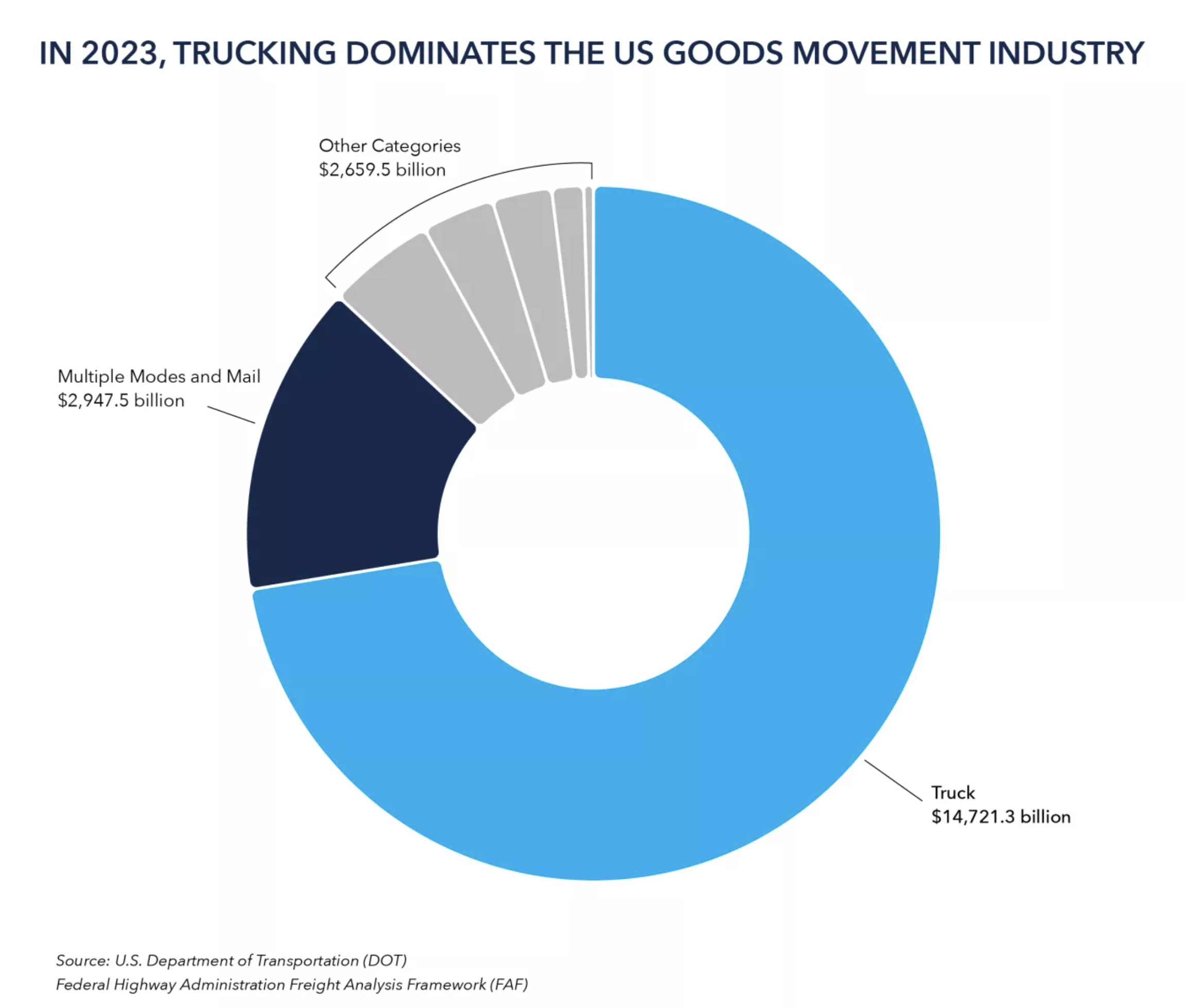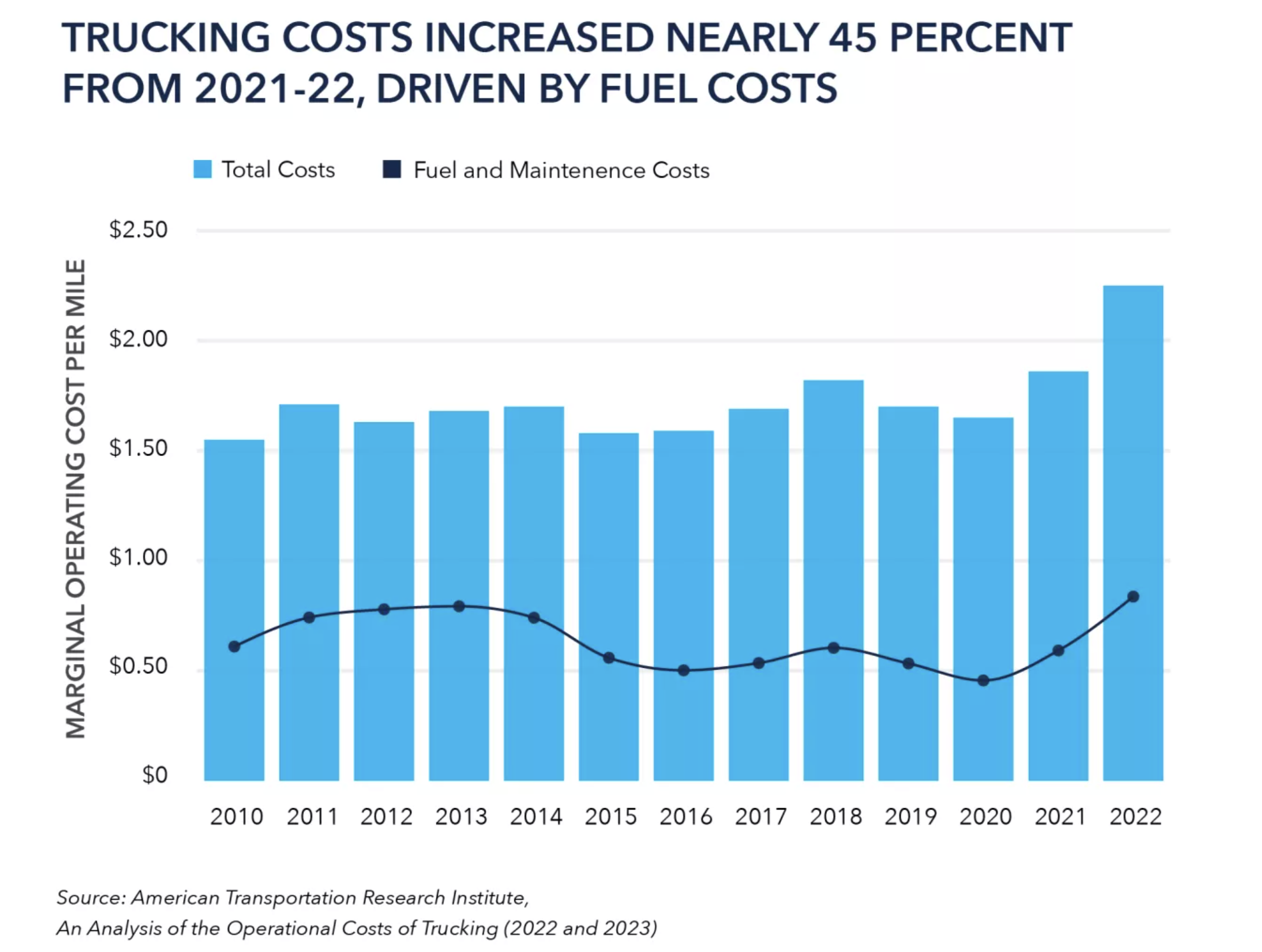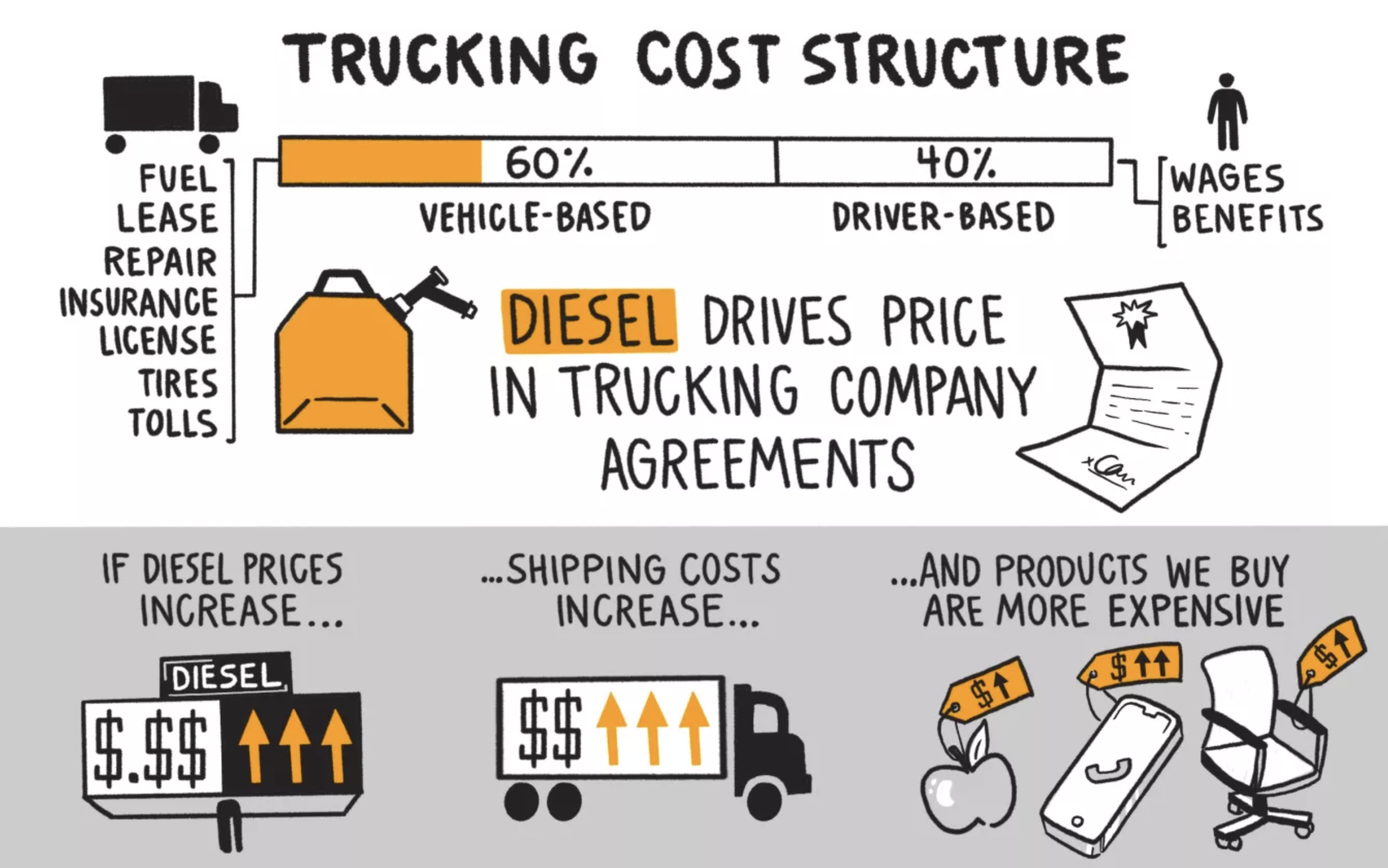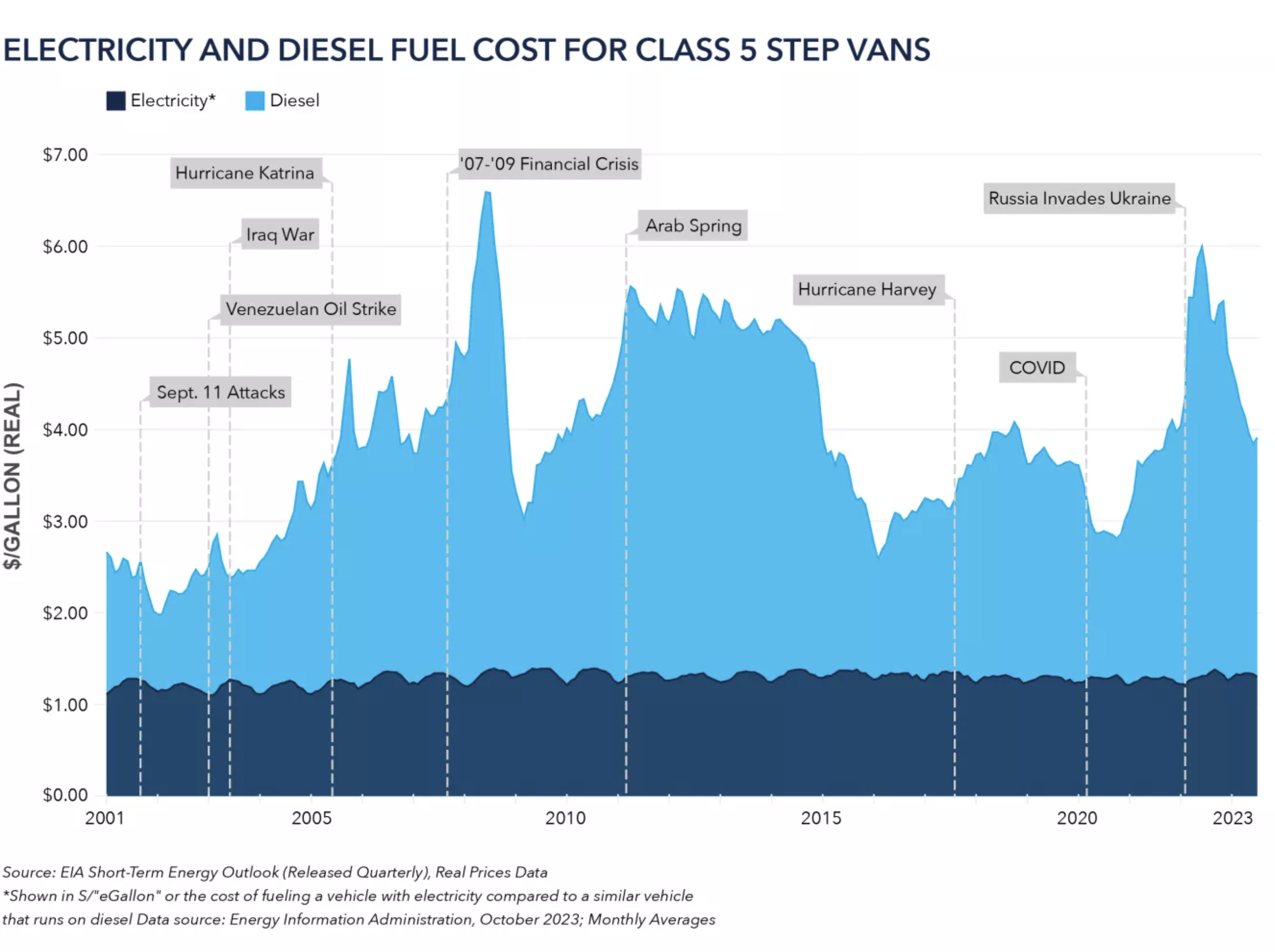Sign up for daily news updates from CleanTechnica on email. Or follow us on Google News!
Trucking is central to the United States economy, ensuring the seamless flow of goods across states to consumers. Odds are the device or paper you’re reading this on, the chair you’re sitting in, and the food you ate today spent time on a truck. Trucking dominates the U.S. goods movement industry. Projections show that nearly $15 billion of all goods by value were carried on a truck. Therefore, changes in the trucking industry can have a profound impact on all Americans. That’s why truck electrification can help fight inflation and keep money in consumers’ pockets.
Switching from a diesel truck to an electric truck has compelling benefits, both for the environment and for the business or individual making the transition. Electric trucks produce zero tailpipe emissions, reducing carbon pollution and improving air quality by eliminating pollutants like nitrogen oxides and particulate matter. These trucks are also notably quieter, contributing to reduced noise pollution in urban areas. Economically, electric trucks offer lower operating costs with cheaper electricity as a fuel source and fewer maintenance requirements due to their simpler drivetrains.
Right now, the trucking industry is dependent on diesel fuel – and diesel is expensive and polluting. High diesel fuel prices contribute to rising consumer costs, while money spent on fuel often flows out of the country. Electrifying trucks presents a compelling solution to these challenges. Recent analyses show that the total cost of ownership of electric vehicles is below that of a diesel vehicle. For example, a new electric delivery truck can be 30 percent cheaper than a diesel one over its lifetime, according to a study by Roush Industries. By reducing operating costs and stabilizing energy expenses, electric trucks have the potential to fight inflation and keep money where it matters most—within our communities. Embracing this shift is not just a sensible economic choice; it’s an environmental imperative that benefits us all.
The trucking industry will remain critical: by 2050, trucks will carry $26 billion of US trade. For many common household goods trucks are even more vital. For example, over 90% of all food and furniture is moved by truck.
The Trucking Industry’s Cost Structure
Given trucking’s centrality to the U.S. economy, it’s worth understanding the industry’s cost structure. According to analyses by the American Transportation Research Institute (ATRI), marginal operating costs per mile for motor carriers can be split into two categories: vehicle-based and driver-based costs. Since 2010, carriers’ marginal operating costs per mile have grown by around 45 percent, however, the split between vehicle-based and driver-based costs have remained relatively stable at 60 percent and 40 percent respectively. As the larger of the two, carriers’ vehicle-based costs are predominantly driven by fuel and maintenance costs, which accounted for nearly 40% of marginal operating costs per mile in 2022.
As ATRI explains, “fuel was again the largest driver of higher costs [in 2022], jumping by 53.7 percent to 64.1 cents per mile.” Importantly, fuel and maintenance costs are felt most acutely by small carriers–fleets with 10 or fewer vehicles–which make up over 95% of all registered motor carriers. This is due to smaller carriers’ inability to hedge fuel markets or secure bulk pricing, increasing their exposure to diesel price fluctuations.
Motor carriers use two types of agreements to move freight:
Contract rates are longer-term, prenegotiated rates between a shipper and carrier for a specific route.
Spot rates are the price of moving one shipment on a specific route at a specific time.
Fuel prices factor into both agreements to help carriers pass on costs:
Contract rates include a fuel cost baseline and may include an additional fuel surcharge if case diesel prices rise significantly.
Spot rates are calculated using current diesel prices.
In this way, diesel prices feed into the cost of transporting goods by truck.
In turn, businesses hiring trucks to move products such as fruits and vegetables, iPhones, or sofas may raise prices to cover the additional transportation expenses. These price increases can affect consumers directly when they purchase goods at retail stores. Higher operating costs due to expensive diesel fuel can quickly translate into elevated prices for consumer goods.
The Consumer Price Index (CPI)
Different tools measure inflation–the change in prices for goods and services over time. The persistent increase in the cost of living erodes the purchasing power of individuals and families, affecting their everyday lives. One key measurement collected by the US Bureau of Labor Statistics is the Consumer Price Index (CPI), “a measure of the average change over time in the prices paid by urban consumers for a market basket of consumer goods and services.” Over the last 12 months, overall CPI increased by 3.7%, with some products experiencing even greater increases.
Many of today’s most common consumer goods travel on trucks, which are highly sensitive to and pass on diesel fuel costs. By transitioning to electric trucks, we can break this cycle. As we will examine in the next section, the lower energy cost and stability offered by electricity can help curb inflationary pressures from the trucking industry. When trucking becomes more cost-effective, consumers benefit from lower prices, effectively putting more money back into their pockets.
Diesel vs. Electricity Fuel Costs
One of the primary reasons why truck electrification combats inflation is the stark contrast in fuel costs between diesel and electricity. In general, electric trucks are two to five times as efficient as diesel trucks, reducing total energy consumption. Additionally, electricity prices are dramatically less expensive: depending on charging behavior and vehicle use, fueling with electricity rather than diesel can slash fuel costs by 40% to 60%. Moreover, diesel fuel is subject to price volatility influenced by global oil markets and geopolitical tensions. When diesel prices surge, these higher operating costs are passed on to consumers in the form of increased prices for goods.
Electricity, on the other hand, offers a more stable and predictable pricing structure. As an energy source, electricity is generated from various domestic sources, including renewable energy, which can insulate trucking operations from global fossil fuel price swings. For example, the following chart shows historical diesel gallon prices compared to fueling a Class 5 Step Van on electricity:
A Promising Future
The transition to electric trucks is a promising step for fleets, offering a multifaceted solution to reduce operating costs and eliminate local air and climate pollution. As electric trucks become more prevalent, the long-term savings through lower fuel and maintenance expenses will have a ripple effect. Ultimately, driving down prices for goods and services, benefiting both the industry and consumers. By switching to electric trucks, fleets can play a pivotal role in fostering economic efficiency and environmental responsibility.
Republished from the NRDC Expert Blog. By Guillermo A. Ortiz
Have a tip for CleanTechnica? Want to advertise? Want to suggest a guest for our CleanTech Talk podcast? Contact us here.
EV Obsession Daily!
I don’t like paywalls. You don’t like paywalls. Who likes paywalls? Here at CleanTechnica, we implemented a limited paywall for a while, but it always felt wrong — and it was always tough to decide what we should put behind there. In theory, your most exclusive and best content goes behind a paywall. But then fewer people read it!! So, we’ve decided to completely nix paywalls here at CleanTechnica. But…
Thank you!
Community Solar Benefits & Growth
CleanTechnica uses affiliate links. See our policy here.







